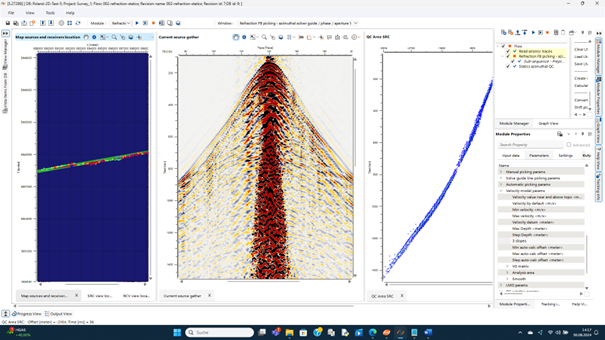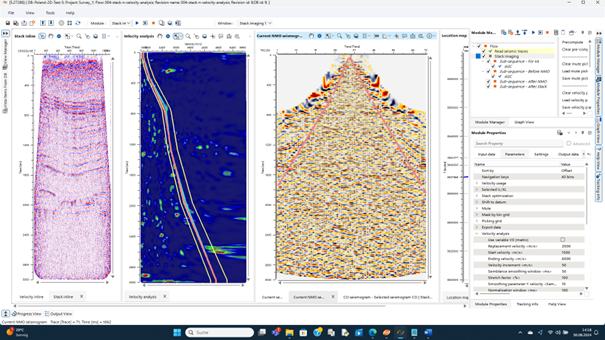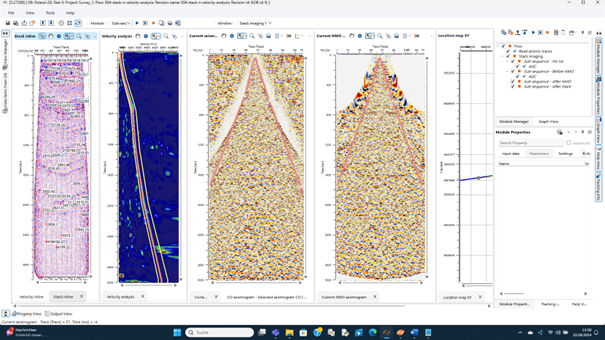
| SOFTWARE |
GEOMAGE ( @Geomage ) QC SEISMIC PROCESSING SOFTWARE -
|
FRACA ( Beicip-Franlab ) FRACA V will be the result of the FRACA++ project which aims to develop the next generation of fracture characterization and modeling tool. FRACA V will be built as a modern, ergonomic, easy to use geomodeling tool. It will use geological, geophysical and dynamic data to fill reservoir grids with parameters that will allow users to take into account fault and fracture behavior to perform dynamic reservoir simulations. Special care will be laid on the use of 3D seismic and geomechanical attributes to control the distribution of fractures. It will handle complex grid systems including CPG grids. Effective 3D fault and fracture simulation will be necessary to be compatible with CPG grids and non layered models. FRACA V will benefit from the progresses made by IFP research teams concerning the simulation of dynamic data on DFN’s, to further develop FRACA’s leading dynamic calibration approach. Finally, the users of FRACA V will be guided if needed by default workflows, including a fast track workflow for quick-look field studies.
THEMIS ( Beicip-Franlab ) Accurately quantifying petroleum system effectiveness from preliminary exploration to field development stages while honoring operational requirements through flexible and upgradable workflows. As shown by recent achievements in the most challenging oil provinces, Temis3D applicability ranges from regional quantitative prospect assessment to pre-drill pore pressure prediction. Temis3D's modular packaging, its integration with 1D and 2D modeling capabilities, and its links to third party software applications ensures Temis3D adaptability to various situations according to data availability and technical issues to be addressed. The long and unmatched leading scientific research of the Institut Français du Pétrole brings to Temis3D's algorithms the required technical excellence to capture the complexity of sedimentary basin evolution.
RML ( Beicip-Franlab ) RML is a unique suite of advanced solution for geologists, geophysicists and reservoir engineers. RML suite is composed of 4 integrated and independent modules: RML-GeoSurf is based on an interactive interface for building accurate 3D structural frameworks, whatever the fault surface geometry. RML-GeoSim buids high resolution corner-point geometry reservoir grids based on the structural framework and honouring stratigraphic rules and flow unit definitions RML-GeoSim also offers a large variety of deterministic and stochastic techniques to populate grids with lithology and petrophysics. In particular, geological facies simulations allow integrating various constraints (logs, seismic and sedimentological model). RML-GeoSim features a true and efficient link to the ISATIS geostatistical toolbox from Geovariances. RML-SimGrid is an intuitive reservoir grid builder that generates corner point geometry and XY-ortho grids based on structural framework and stratigraphic interpretations. RML-SimGrid benefits from advanced grid refinement functionalities. RML-SimUp is a versatile topologic and geometric upscaling solution that populates the corner point geometry grid obtained with RML-SimGrid with petrophysical properties from high resolution geological models. The proposed layer based approaches even preserve thin geological features.
|





